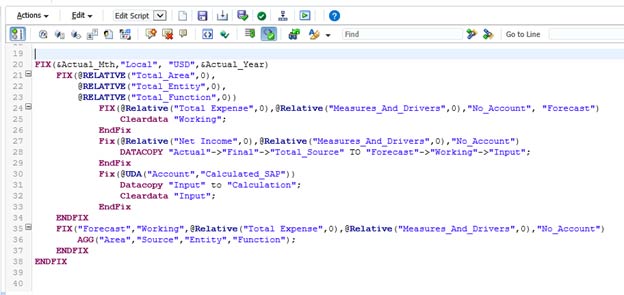Blog
Seeding Approach and Examples
Seeding is the process of pre-populating data for a certain dimension member, usually scenario, for a period or a set of periods. "Seeding" is a more formal term for copying or transferring but could include some calculation(s) within the transfer.
In Oracle Hyperion on-premise Planning and Planning in the Cloud (PBCS), Seeding business rules are often used as an effective way to create baseline data for estimating and forecasting. Finance groups use Seeding Business rules to create a starting point from which to view data and make relevant updates. As an example, a business rule could Seed the 2020 Budget to the Forecast for the full year at the start of the year, then recalculate the Forecast data based on newly forecasted FX rates. Or, the seeding ruleset can come up with an annual baseline budget then automatically spread that based on historical trends.
Common examples of Seeding rules are below:
- Seed Actuals to Forecast
- Seed Plan to Forecast
- Seed Forecast Working to Monthly Forecast
- See Current Year Budget into 5 Year Plan
See the example "Seed Actuals to Forecast" example for one period below. This example does not include a calculation, but transfers to the Actual->Final->Total_Source data to the Forecast->Working->Input scenario, then moves any accounts with a 'Calculated_SAP' UDA from Input to Calculation source.

Some general Seeding rule requirements are below:
- 1. Data loaded as periodic
- 2. Actual is deleted, as it seeds Forecast.
- 3. Forecast is seeded for current year unless otherwise specified
- 4. Budget is seeded for the Next Year unless otherwise specified
Above are some examples but seeding calculation requirements are custom for every organization. Once the specific scenario has been seeded, there could be an option to modify and adjust manually but seeding eliminated the need to create your entire forecasting and budgeting data from scratch.
Contact MindStream Analytics
Want to know more about how our Consultants can help your Finance team? Please complete the form below and we'll get back to you shortly.
Partner SpotLight

Oracle
Oracle has the most comprehensive suite of integrated, global business applications that enable organizations to make better decisions, reduce cost
